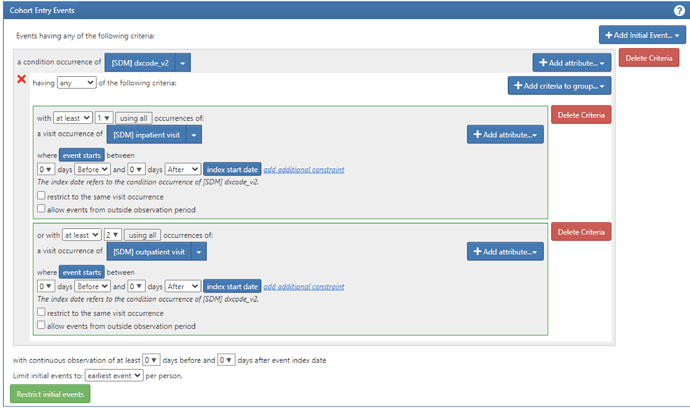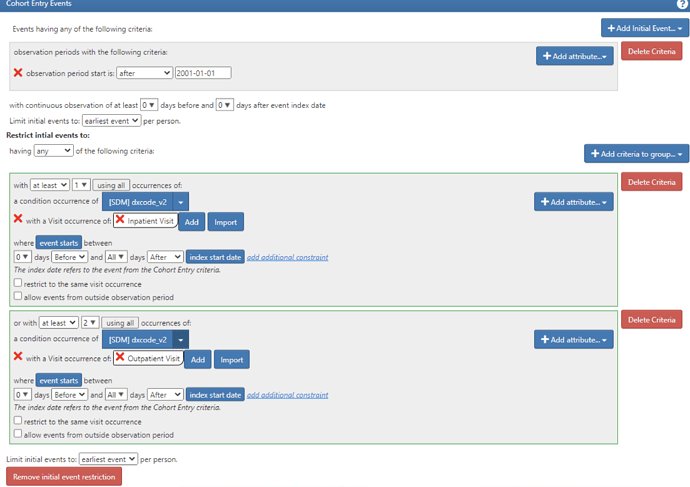Hi! Good afternoon.
I tried putting the same criteria for diabetes diagnosis as cohort entry event (figure 1) and initial event(figure 2) and assumed that they would yield the same results, however, the numbers were different.
Criteria: 1) patients with at least 1 inpatient diabetes diagnosis; 2) patients with at least 2 outpatient diabetes diagnosis (on separate day).
Figure 1
Because the index date is the date of having diagnosis, and I want to set up the date of inpatient and outpatient visit the same as the date of having diagnosis (0 day before and 0 day after).
Figure 2
Because all the records were recorded after 2017 so the criteria about observation period start date won’t affect the result, presumably. Also, the index date is the observation start date, all the events would occur 0 before and all after the index date.
Any suggestions on trouble shooting will be greatly appreciated!
Shanshan


